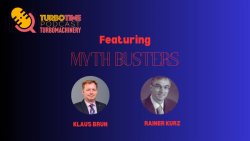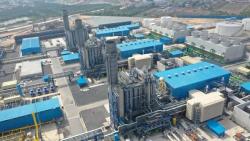
OR WAIT null SECS
© 2024 MJH Life Sciences™ and Turbomachinery Magazine. All rights reserved.
Hydrogen co-firing in gas turbines: The road ahead
Using hydrogen as a fuel in gas turbines plays an important role in the decarbonization of the energy sector. It’s a market need driven by regulation. Natural gas with hydrogen derived from chemical industry is emerging as a key fuel for burning in gas turbines.
This article is based on the presentation, “Hydrogen co-firing in Siemens low NOx industrial gas turbines” by Jenny Larfeldt, Mats Blomstedt, Mats Björkman and Åsa Lyckström of Siemens at Power Gen International.
Hydrogen combustion in a gas turbine has some unique features. Hydrogen ignites/burns fast. H2 combustion moves closer to the gas turbine injector and increases the risk of flashback. Hydrogen has a wide flammable region.
Hydrogen has a low ignition energy. Only a fraction of the ignition energy is needed to get H2 going compared to methane. Combustion is conceivable in unwanted sections/area and flame may appear inside burner, ie, flashback.
Gas turbines can burn hydrogen with some modifications in burner and combustion systems. NOx emissions increase if H2 percentage increases but the increase is still several order of magnitudes lower compared to conventional diffusion burners. The risk of flashback is similar to that of liquid fuels.
Mitigation differs depending on H2 amount in the fuel. The flame speed is ten times higher compared to natural gas. More compact flames in DLE burners (dry low emissions) lead to slight increase in NOx compared to natural gas.
Three regimes are observed:
H2 < 60 vol-%: slight increase in burning velocity and chemistry hydrocarbon dominated
60 < H2 < 90 vol-% intermediate regime
H2 > 90 vol-% dramatic increase in laminar burning velocity and chemistry is hydrogen dominated
Siemens has introduced hydrogen co-firing capability of up to 60% for various models. The general geometry of the burners are identical for the SGT-600,-700 & -800 that have hydrogen co-firing capability. There is no impact on service interval for co-firing of H2.
The next step for Siemens R&D is 100% H2. Experience has been built on steady increase of H2 co-firing capabilities based on continuous improvement of standard DLE burner design
What is aiding the development of DLE combustor for 100% H2 is additive manufacturing, according to the authors. The manufacturing is faster and previously impossible constructions are now possible.
For instance, a conventionally manufactured gas turbine combustor has 13 machined parts, is assembled by 18 welds, has an external pilot gas feed pipe, and weighs around 4.5 kg. An additive manufactured component has one part, the pilot gas feed is integrated in the structure, and the weight is 3.6 kg. Lead time is reduced by 90%.
Additive manufacturing is accelerating the development of extended fuel capability in gas turbines.



